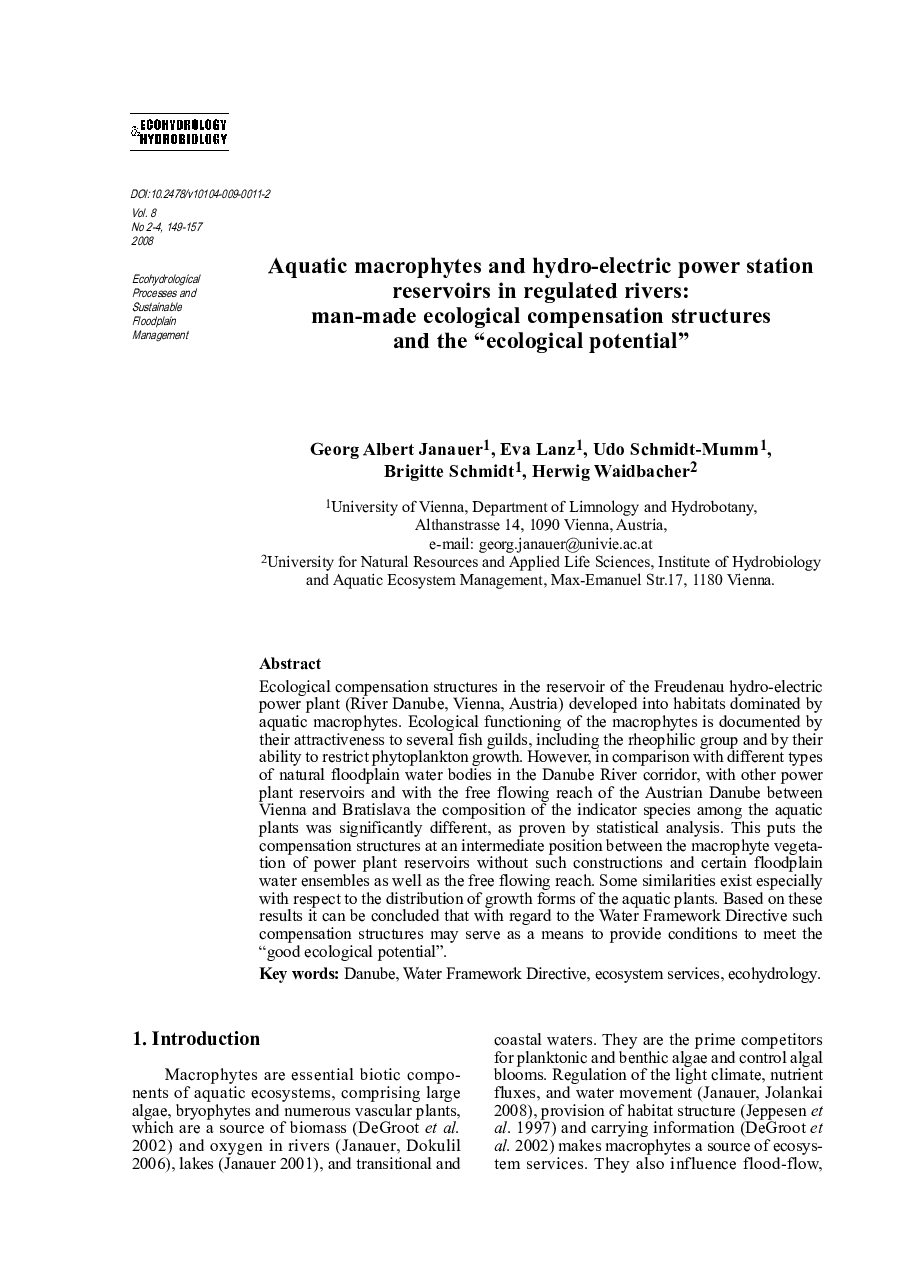| Article ID | Journal | Published Year | Pages | File Type |
|---|---|---|---|---|
| 4388234 | Ecohydrology & Hydrobiology | 2008 | 9 Pages |
Ecological compensation structures in the reservoir of the Freudenau hydro-electric power plant (River Danube, Vienna, Austria) developed into habitats dominated by aquatic macrophytes. Ecological functioning of the macrophytes is documented by their attractiveness to several fish guilds, including the rheophilic group and by their ability to restrict phytoplankton growth. However, in comparison with different types of natural floodplain water bodies in the Danube River corridor, with other power plant reservoirs and with the free flowing reach of the Austrian Danube between Vienna and Bratislava the composition of the indicator species among the aquatic plants was significantly different, as proven by statistical analysis. This puts the compensation structures at an intermediate position between the macrophyte vegetation of power plant reservoirs without such constructions and certain floodplain water ensembles as well as the free flowing reach. Some similarities exist especially with respect to the distribution of growth forms of the aquatic plants. Based on these results it can be concluded that with regard to the Water Framework Directive such compensation structures may serve as a means to provide conditions to meet the “good ecological potential”.
